Introduction
 |
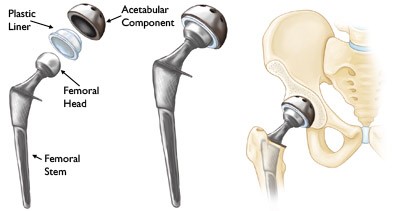 |
A total hip replacement is a surgical procedure where the diseased cartilage and bone of the hip joint is surgically replaced with artificial materials. Total hip joint replacement involves surgical removal of the diseased ball and socket and replacing them with a metal (or ceramic) ball and stem inserted into the femur bone and an artificial plastic (or ceramic) cup socket.
Problems and limitations faced by patients in Total Hip Replacement
Total hip replacements are performed most commonly because of the progressive worsening of severe arthritis in the hip joint. The most common type of arthritis leading to total hip replacement is degenerative arthritis (osteoarthritis) of the hip joint. This type of arthritis is generally seen with aging, congenital abnormality of the hip joint, or prior trauma to the hip joint.
People who benefit from hip replacement surgery often have :
- Hip pain that limits everyday activities, such as walking or bending
- Hip pain that continues while resting, either day or night
- Stiffness in a hip that limits the ability to move or lift the leg
- Inadequate pain relief from anti-inflammatory drugs, physical therapy, or walking supports
What is the physiotherapy management after total hip replacement?
The goals of physical therapy are to prevent contractures, improve patient education, and strengthen muscles around the hip joint through controlled exercises.
If the condition of the hip allows it, some doctors will recommend a preoperative exercise program to build muscle and increase flexibility. This can help with your recovery.
After surgery, patients are encouraged to frequently perform deep breathing exercises and effective coughing technique in order to avoid lung congestion and the collapse of tiny airways in the lungs.
-
- Exercise
Active and strengthening exercises need to be done regularly. Exercises will restore the movement and maintain the adequate strength and stability of the hip joint.
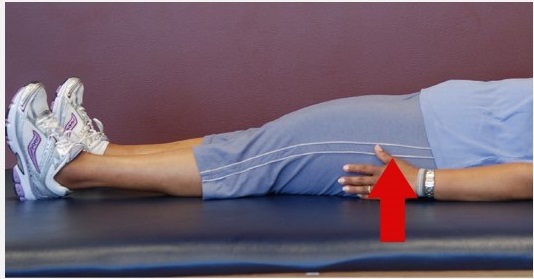 |
|
 |
|
 |
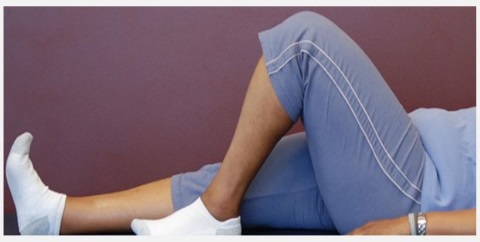 |
| Lie flat on your back with your legs straight. Bend your knee as much as you can and hold for 5 seconds. Perform 10 repetitions (3 sets). |
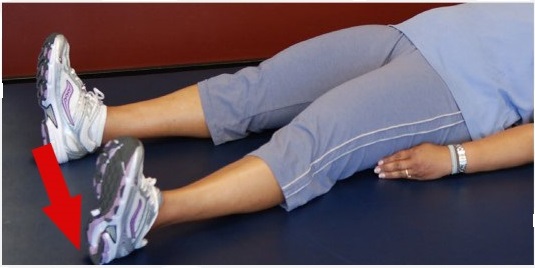 |
|
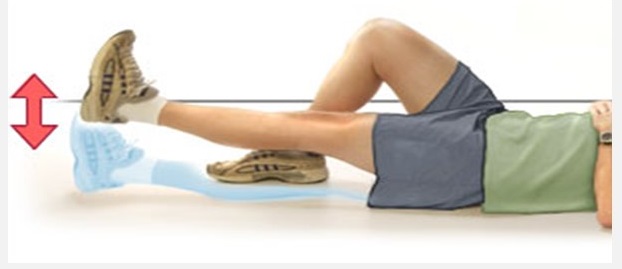 |
|
Precaution after total hip replacement – Do’s and don’t
-
- 1. Avoid combinations of movement with your new hip. For example, do not sit with your legs crossed, because in that position you both bend your hip and bring your hip across your body.
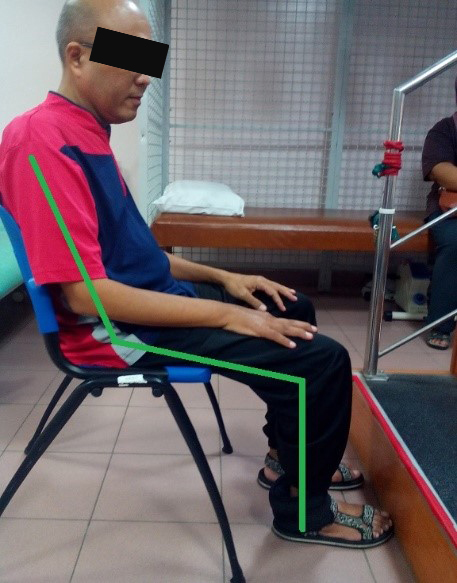 |
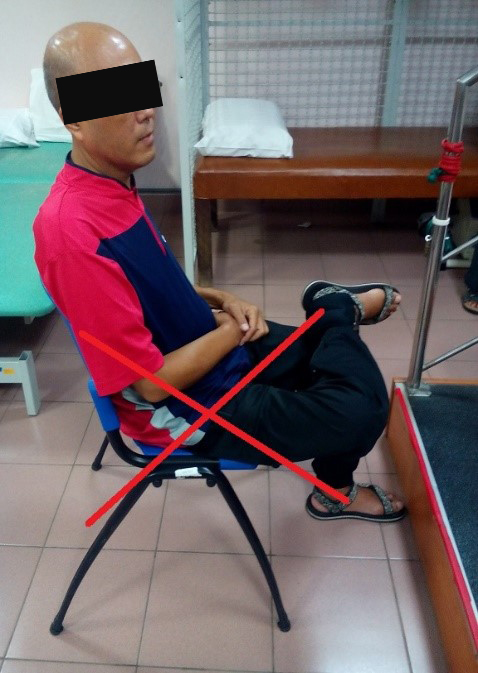 |
2. Avoid bending the hip more than 90 degrees. Physiotherapist may suggest these ideas :
-
- Do not sit on low chairs, beds, or toilets. You may want to get a special “raiser” for your toilet seat temporarily.
- Do not raise your knee higher than your hip.
- Do not lean forward while you are sitting down, or as you sit down or when you stand up from sitting
- Do not bend over more than 90 degrees. This means you can’t bend down to tie your shoes for a while.
3. For about 8 weeks, avoid your leg to cross the center of your body towards the other leg.
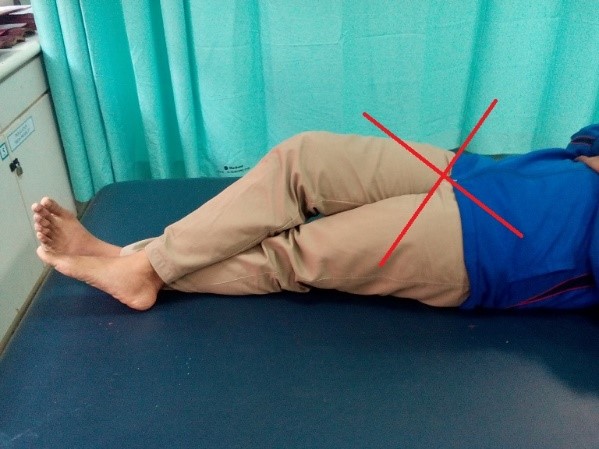 |
Do not cross your legs. Be careful as you get in or out of the bed or a car, so your leg does not cross that imaginary line in the middle of your body. |
4. Avoid rotating your leg in or too far out, you must keep your toes pointing forward or slightly out.
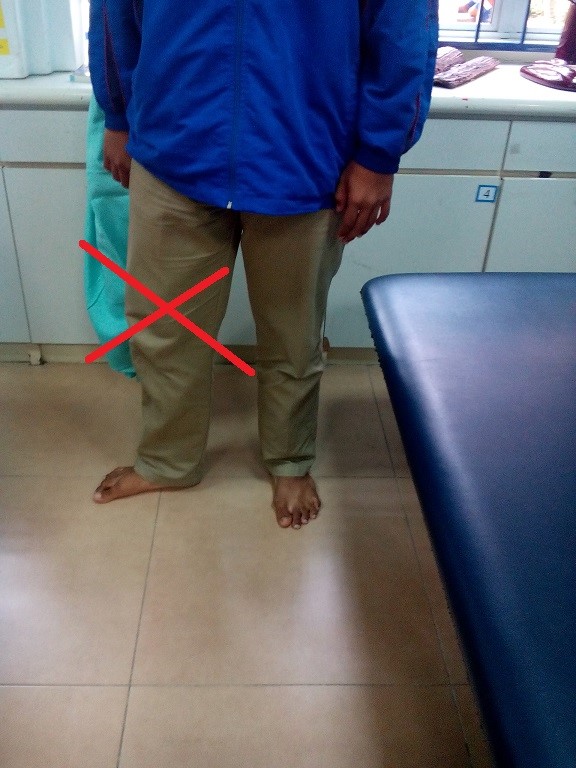 |
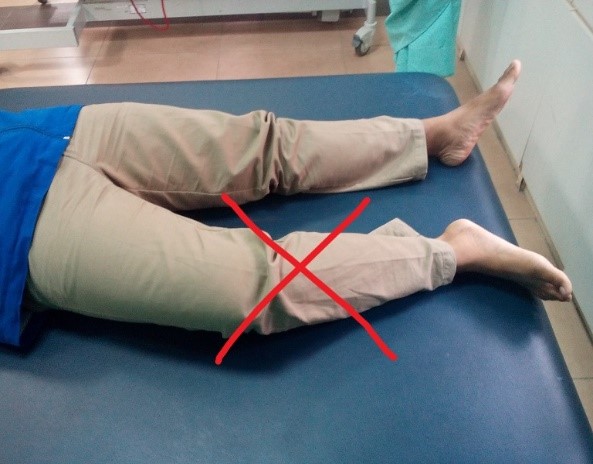 |
What is the prognosis of total hip joint replacement?
Patient education is important to ensure longevity of the replaced hip. Strenuous exercises such as running or contact sports are discouraged, since these activities can reinjure the replaced hip. Swimming is ideal in improving muscle strength and promoting mobility and endurance. You should be aware and notify any caregivers that they have an artificial joint.
References
- American Academy of Orthopaedic Surgeons (2009). Activities after hip replacement. Available online: http://orthoinfo.aaos.org/topic.cfm?topic=a00356.
- Imamura M, et al. (2012). Single mini-incision total hip replacement for the management of arthritic disease of the hip: A systematic review and meta-analysis of randomized controlled trials. Journal of Bone and Joint Surgery, American Version, 94(20): 1897–1905.
- http://orthoinfo.aaos.org/topic.cfm/. Retrieved 10 August 2015
Source image
- http://www.medicinenet.com/total_hip_replacement/. Retrieved 10 August 2015
- Perkhidmatan Fisioterapi, Bahagian Sains Kesihatan Bersekutu
- Unit Fisioterapi , Hospital Melaka
| Last Reviewed | : | 23 August 2019 |
| Writer / Translator | : | Ismawi bin Ismail |
| Accreditor | : | Daaljit Singh a/l Harbachan Singh |
| Reviewer | : | Halimah bt. Hashim |







